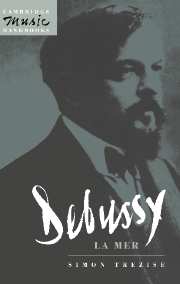Book contents
4 - The ‘invisible sentiments of nature’
Published online by Cambridge University Press: 02 December 2009
Summary
Musical seas
Composers have written music in celebration of the sea and other watery phenomena for centuries. In one very beautiful example, Mozart evokes the gentle wind and calm waves in the Act I trio from Così fan tutte, ‘Soave sia il vento’. Here the wind and sea are entwined together in a union that is rarely broken in later sea music. Muted strings play an undulating figure of a sort that was to feature prominently in the impressionist parts of Wagner and the ‘real’ Impressionists who followed.
The sea is often not the main subject; rather, it provides the context for human actions, or acts as a metaphor for human emotions. A rare exception is Mendelssohn's exquisite Hebrides overture, which seems to place the changing character of the sea at the heart of the composition. Debussy had a low opinion of Mendelssohn in general, describing him as an ‘elegant and facile notary’, but it is difficult to imagine so popular a water piece failing to make some impression on him.
The sea is an important element in Wagner's operas, as are the River Rhine and other inland waters, but perhaps the most important work in the evolution of French musical Impressionism (however little one may like the term, it is invariably used in historical writing to characterise this period and works by Chabrier, Debussy, Dukas, and others) was a short orchestral piece that is not much concerned with water at all. Forest Murmurs is a clever arrangement of the lyrical episodes that precede and follow the young Siegfried's murderous activities in Act II of Siegfried.
- Type
- Chapter
- Information
- Debussy: La Mer , pp. 32 - 44Publisher: Cambridge University PressPrint publication year: 1995



